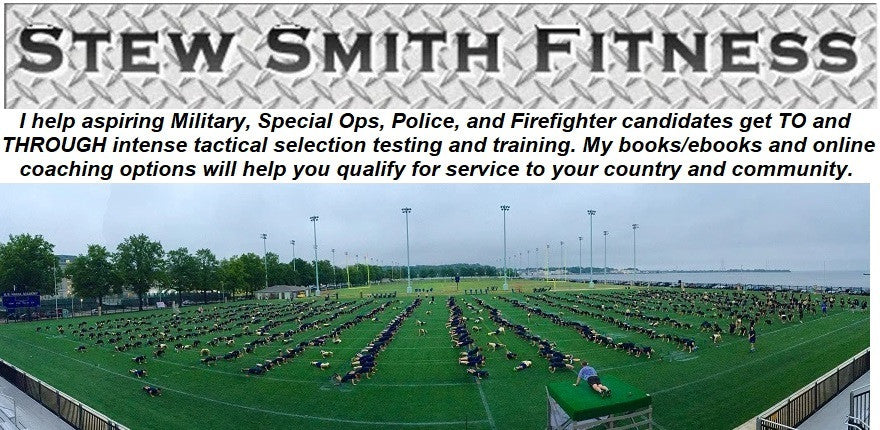Fire Fighter Conditioning for Career Fire Fighters as well as Volunteer Fire Fighters requires two different types of programs but they both must yield the same results – a Fit Fire Fighter who can handle the weight of his gear, the weight of an injured victim, and the hot working environment. Being unfit should not be an option for any fire fighter with the risks of life on the line.
Fact: More than 100 fire fighters each year die from heart attack
The differences in Volunteer Fire Fighters and Career Fire Fighters jobs requirements are minimal; however, fitness levels within the two groups vary from unfit to extremely fit – much like the countries fitness levels. The Fire Fighting profession is simply a cross section of America’s fitness levels – both groups - Career Fire Fighters and Volunteer Fire Fighters – require a certain level of fitness to do their job well and both groups NEED to add fitness into their world as it will save their own life or their buddies or accident victim’s lives. Both groups have fit and unfit members in their ranks with no annual fitness standard to strive for.
After interviewing volunteer and career fire fighters and understanding the physical requirements of fighting a fire and actually getting to take part in the training at the Mississippi State Fire Academy, we have developed several routines to test fitness, maintain fitness levels, as well as build fitness from the ground floor. Check them out!
Testing Fire Fighter Fitness
As a fitness writer who focuses on physical fitness test preparation, I have always been amazed that ONLY the fire department and a few SWAT teams and Military Special Forces have fitness tests that are job related. Personally, the fire fighter test I am basing this fitness plan on is the CPAT (Candidate Physical Abilities Test) used by many fire departments such as New York City’s FDNY. This is one of the best JOB – RELATED Physical Fitness Tests in my opinion. The Field Strength Test used by FDNY also is a killer workout done at least once a week at the Rock (FDNY Fire Fighting Academy).
Many issues have surfaced over the years on whether this test is a good indicator of how a person will fight fire or not and the Pass/Fail criteria and graded test issues are still to be resolved in most fire fighting circles. However, I have never found a better test out of the thirty plus military and law enforcements plans I have created over the past 10 years that accurately tests job related skills like the CPAT.
My conditioning plan for this test is not designed to answer the debate on the usefulness of this test among the fire fighting community, however, this plan is going to assist with developing the muscle strength, stamina and cardiovascular endurance required to perform this test as well as other important job requirements.
Stair Climb – in full gear (pace yourself at 60 steps per minute for 3:00)
Hose Drag – Run with hose 100ft / pull hose an additional 50 ft
Equipment Carry – Carry tools (30+lbs) 80ft
Ladder Raise and Extension – Lift 24ft ladder to vertical position
Forcible Entry – 10lb sledgehammer to break down door
Search – in dark tunnel with obstacles – crawl on hands and knees
Rescue – remove a 165 lbs man person 70 ft total distance
Ceiling Breach and Pull – using a pike pole pull / push ceiling down
NOTE – this is just a general description of the CPAT. There are points available and deducted along the way for good / badly performed events done within a time limit. For a more in depth version read the pages below on the CPAT.
Before ever taking the CPAT, a candidate will have to do a heart rate test to enter the training program. Basically, using a supped up Karvonen Formula you have to keep your heart rate below your theoretical Max Heart Rate (MHR) which is the formula 200-age = MHR. So say you are 25 years old, you will have to do a step test for five minutes and keep your MHR under 200 – 25 = 175 Beats Per Minute (BPM). Normal K formula is 220-age =MHR
To do this – it requires a steady routine of cardio vascular endurance exercise for several weeks / maybe even months depending on your current fitness level. Breathing tips: practice breathing 3 steps INHALE and 3 steps EXHALE to keep your heart rate low.
If you can arrange a workout that resembles the above abilities tests, then you will do fine at the training academy if you can handle the heat! Weights, high reps calisthenics, torso, leg, and arm strength, and cardio-vascular conditioning are all required. See workout we created at the StewSmith.com Store.
The Fire Fighter Workout
